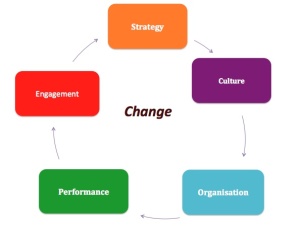McKinsey, the international management specialists, write in their latest quarterly newsletter about the dangers of ignoring organisational growth when developing a new business strategy (the where’s and hows of growth). The authors, Martin Dewhurst, Suzanne Heywood, and Kirk Rieckhoff, make the case that “organizational processes and structures that are well suited to today’s challenges may well buckle under the strain of new demands”. Based on the experiences of 3 businesses that faced growing pains, the article focusses on three aspects of the organisation side of the equation.
1. Is the structure appropriate for the strategy? An organisation’s structures (and culture) evolve over time based on the existing needs of the business. However, these same structures can stifle the possibility of growth. Any established structure will have a built-in inertia. Management need to understand how best to adapt, change or even work around the existing structures in order to bring about the new strategy.
ii. Are the processes ‘fit for purpose’? Organisational processes evolve to fit the current purpose of an organisation. Start ups, for example, tend to be informal. This allows a collegiate approach to decision-making. However, as the start up moves to the next phase, informal processes not only are no longer inappropriate but could hold back growth. A meeting with 5 can be informal, a meeting with 25 cannot.
iii. Have your people the skillsets? As a business grows, so does both its complexities and ambiguities. Skillsets that were appropriate for a simple organisation tend to be lost in a growing organisation. If the business does not give its employees the ability to cope with the new complexities, even successful employees will flounder or even fail.
Creating a new strategy is exciting for a management team. Creating a new organisation to implement that strategy may not be as sexy but it is equally as important; as I have written previously, culture will eat strategy for breakfast.




 Posted by The Dynamics of HR
Posted by The Dynamics of HR 
